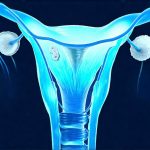Bladder infections, often referred to as cystitis, are a common ailment affecting millions annually, predominantly women. While many bladder infections resolve with straightforward antibiotic treatment, concerns linger regarding the potential for long-term complications if left unaddressed or recurring frequently. The anxiety surrounding these infections isn’t just about the immediate discomfort – painful urination, frequent urges, and abdominal pressure – but also the possibility of lasting damage to this vital organ responsible for urine storage and elimination. Understanding the nuances between a simple infection and one that could lead to more serious consequences is crucial for proactive health management and informed decision-making regarding treatment and preventative measures.
The development of permanent bladder damage from an untreated or recurrent bladder infection isn’t necessarily common, but it is possible under certain circumstances. The severity and duration of the infection play a significant role, as do underlying factors like immune system strength, pre-existing medical conditions (such as diabetes), and promptness of treatment. Ignoring symptoms or self-treating without professional guidance can increase the risk of complications. This article will delve into how bladder infections can potentially lead to permanent damage, what types of damage might occur, and what steps can be taken to minimize risks and protect long-term bladder health. It’s important to remember that this information is for educational purposes only and should not substitute professional medical advice.
Understanding the Link Between Infection and Bladder Damage
A typical bladder infection occurs when bacteria – most often Escherichia coli (E. coli) from the digestive tract – enters the urethra and travels to the bladder, causing inflammation. In a healthy individual with a robust immune system, this is usually swiftly addressed by antibiotics. However, repeated or prolonged inflammation can cause changes within the bladder lining itself. The delicate tissues of the bladder wall are vulnerable to chronic irritation, leading to structural alterations over time. These alterations might not be immediately noticeable, but they can progressively compromise bladder function and capacity.
The key concern isn’t necessarily a single severe infection, although those certainly pose a greater risk. It’s often the cumulative effect of multiple infections that slowly erode the bladder’s natural defenses and lead to lasting damage. Each infection causes microscopic scarring within the bladder wall. Over time, these scars can thicken and stiffen the bladder, reducing its ability to stretch and hold urine comfortably. This reduced compliance can result in frequent urination, even with small amounts of urine present, creating a vicious cycle of urgency and discomfort. Furthermore, chronic inflammation can disrupt the normal cellular processes within the bladder, potentially leading to more significant changes.
The type of bacteria involved also matters. While E. coli is most common, other organisms – including those resistant to common antibiotics – can cause more aggressive infections requiring specialized treatment. Infections that ascend beyond the bladder and affect the kidneys (pyelonephritis) are particularly concerning, as kidney damage carries its own set of serious long-term implications. Therefore, recognizing the early signs of a potential kidney infection is vital for prompt intervention and preventing further complications. In some cases, vaginal infections can also contribute to UTIs and potential bladder issues in women.
Types of Permanent Bladder Damage
Several types of permanent damage can arise from chronic or severe bladder infections. One significant outcome is bladder fibrosis, where scar tissue forms within the bladder wall, making it rigid and less elastic. This reduces the functional capacity of the bladder, leading to a smaller volume that can be comfortably held. Another potential consequence is interstitial cystitis (IC), also known as painful bladder syndrome. While the exact cause of IC remains unclear, chronic infections are thought to be a contributing factor in some cases. IC causes persistent pelvic pain and urinary frequency, often without evidence of an active infection – making diagnosis and treatment challenging.
A less common but serious complication is bladder wall thickening. This occurs when the bladder muscle layer becomes abnormally thick due to chronic inflammation and scarring. While initially intended as a protective mechanism, this thickening can interfere with normal bladder contraction and emptying. In severe cases, it can even lead to urinary retention, requiring catheterization. Finally, persistent infections can sometimes damage the detrusor muscle, the main muscle responsible for bladder emptying. Damage to this muscle weakens its ability to contract effectively, potentially leading to incomplete bladder emptying and an increased risk of secondary infections.
Recognizing Early Warning Signs & Symptoms
Early detection is paramount in minimizing the risk of permanent bladder damage. While the initial symptoms of a bladder infection – frequent urination, burning sensation during urination, cloudy urine, and pelvic discomfort – are well-known, it’s crucial to be aware of subtle changes that might indicate developing complications. These include:
- Persistent Urgency: Feeling an overwhelming need to urinate even shortly after emptying the bladder, lasting beyond the resolution of the initial infection.
- Decreased Bladder Capacity: Noticing a significant reduction in how much urine your bladder can hold before feeling uncomfortable.
- Chronic Pelvic Pain: Experiencing ongoing pain in the lower abdomen or pelvic region, even when not actively urinating.
- Difficulty Emptying the Bladder: Feeling like you haven’t fully emptied your bladder after urination.
- Recurrent Infections: Experiencing frequent bladder infections (two or more within six months) that are difficult to treat or require increasingly stronger antibiotics.
If any of these symptoms persist, it’s essential to seek medical attention immediately for a thorough evaluation and appropriate management plan. Delaying diagnosis allows the damage to progress, making treatment less effective in the long run. A urologist specializing in bladder health can provide tailored recommendations based on your specific situation. What to expect after battling a recurring infection is important knowledge for patients.
Prevention Strategies & Long-Term Management
Preventing recurrent bladder infections is arguably the best way to safeguard long-term bladder health. Several strategies can significantly reduce risk:
- Hydration: Drinking plenty of water helps flush out bacteria from the urinary tract.
- Proper Hygiene: Wiping front to back after using the toilet reduces the transfer of bacteria from the digestive tract.
- Urinate After Intercourse: This helps eliminate any bacteria that may have entered the urethra during sexual activity.
- Avoid Irritants: Limit consumption of caffeine, alcohol, and spicy foods, which can irritate the bladder.
- Cranberry Products: While research is mixed, some studies suggest cranberry products (juice or supplements) may help prevent bacterial adhesion to the bladder wall – but they should not be used as a substitute for antibiotics when an infection is present.
For individuals with recurrent infections, preventative antibiotic therapy or low-dose prophylactic antibiotics might be considered under the guidance of a physician. Additionally, exploring underlying factors contributing to frequent infections – such as hormonal imbalances or anatomical abnormalities – can help address the root cause and prevent future occurrences. Long-term management strategies may involve lifestyle modifications, pelvic floor exercises (to strengthen bladder support muscles), and ongoing monitoring by a healthcare professional. Some patients might find their symptoms are related to bladder weakness after childbirth.
It’s crucial to remember that proactive care, early intervention, and consistent follow-up are key to maintaining optimal bladder health and minimizing the risk of permanent damage from infections. While bladder infections can be uncomfortable and disruptive, with appropriate management, most individuals can avoid long-term complications and enjoy a full and active life. It is also important to rule out other causes for urinary discomfort, such as whether douching could be contributing to recurrent infections.





















